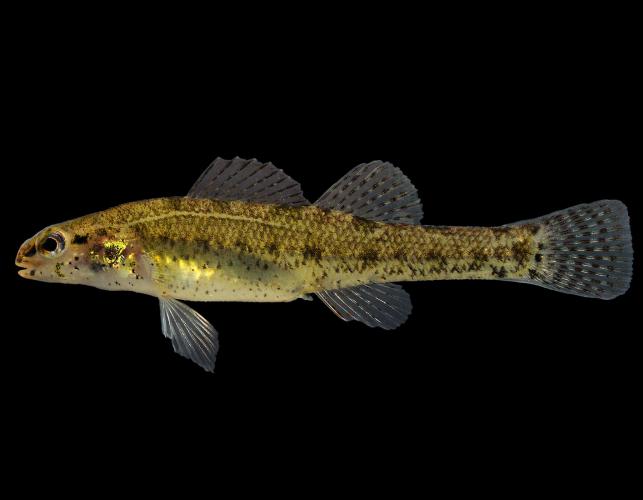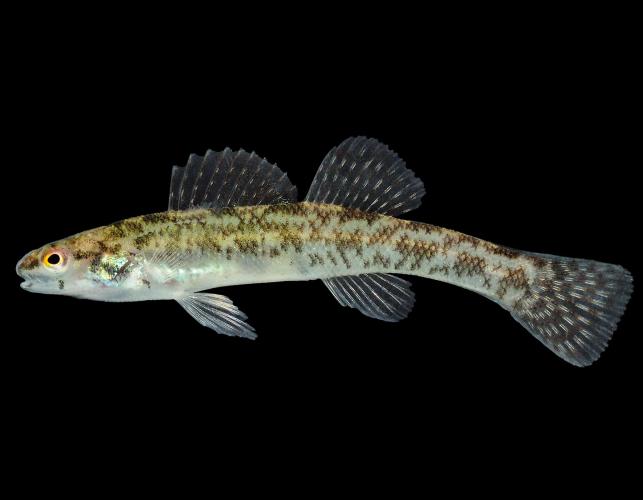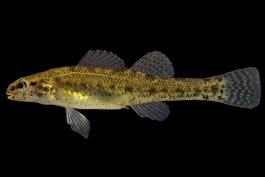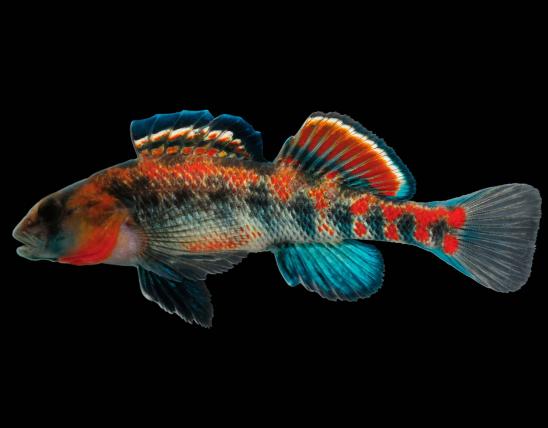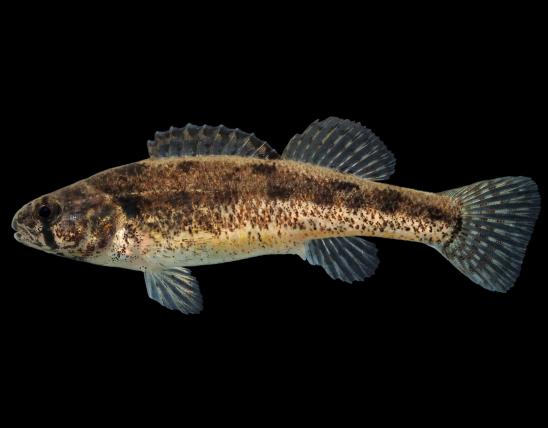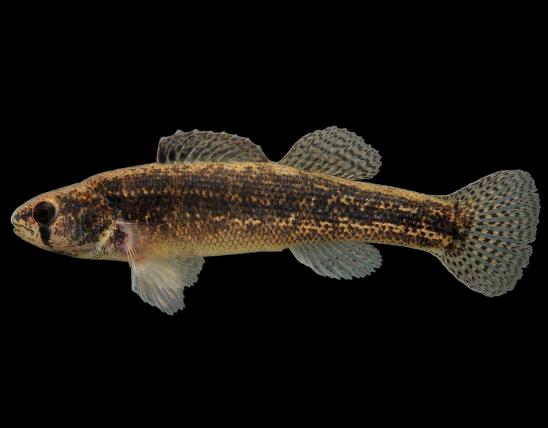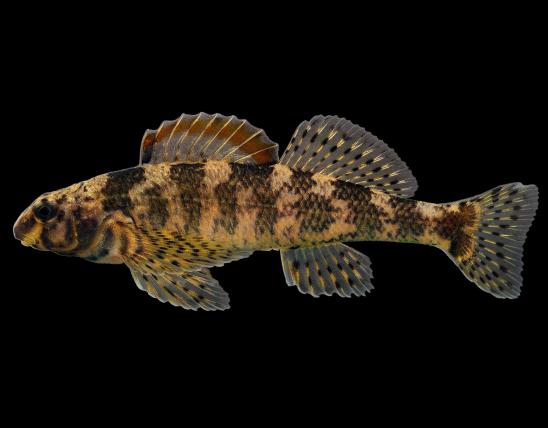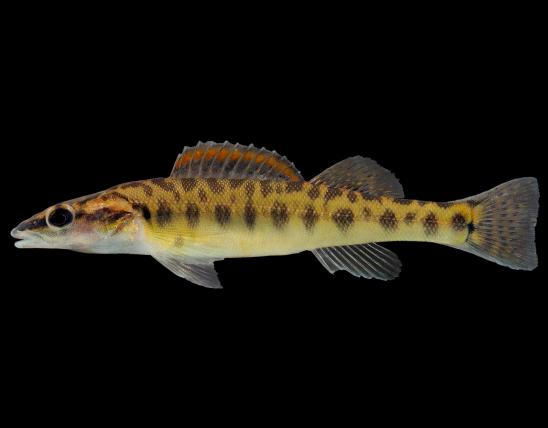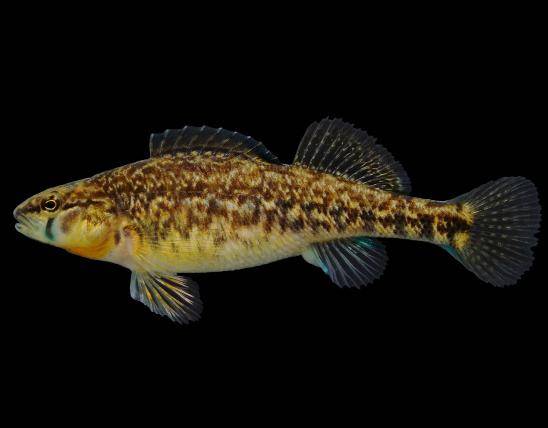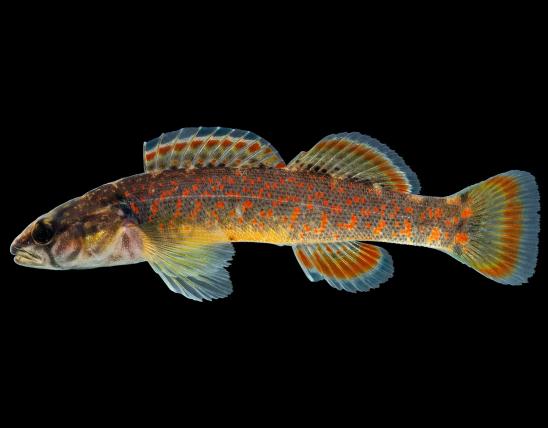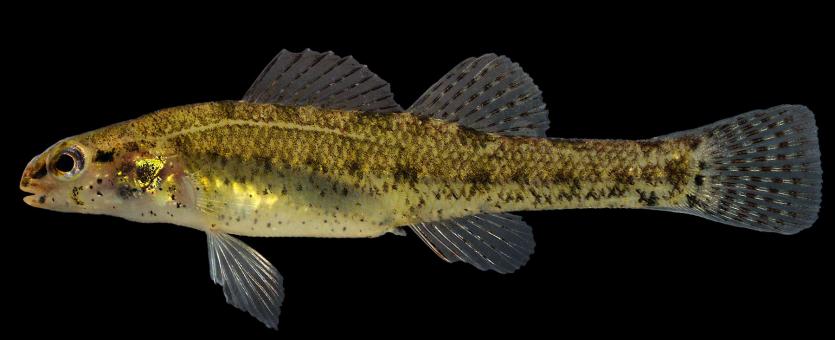
The swamp darter is a slender darter that (like the slough darter) has the lateral line arched upward, separated by only 3 scale rows from the spinous dorsal fin. The gill covers are not broadly connected by a membrane across throat. Unlike the slough darter, the breast, belly, and nape (the body surface in front of the dorsal fin) are fully scaled; the sensory canal beneath the eye is incomplete and with 4 or 5 pores; the snout is bluntly rounded. The lateral line ends beneath the spinous dorsal.
The back and upper sides are brownish, with indistinct dark saddles on the back and indistinct dark blotches along the sides; the lateral line stands out as a pale line; this species never has the greenish lateral blotches as in the slough darter. The lower sides and belly are cream-colored with scattered brownish spots. The fins are banded with brownish lines.
Breeding males lack bright colors, but they are darker than others and have tubercles along the rays of pelvic and anal fins.
Adult length: to about 2¼ inches (maximum).
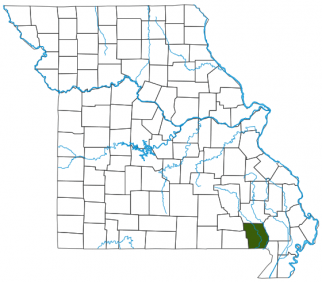
Known only from southeast Missouri’s Butler County: from Allred Lake and from a slough along Cane Creek. It occurs elsewhere in the eastern United States, but until 1981 it was unknown from Missouri.
Habitat and Conservation
Although most darters prefer swift, clear streams and riffles, this darter does not. Allred Lake is one of the least disturbed remnants of cypress swamp left in Missouri. The other place this species occurs in our state is a slough and abandoned stream channel in Butler County. In Arkansas, this species occurs in swamps, bayous, and oxbow lakes without current over a bottom of mud and detritus, almost always in association with dense aquatic vegetation.
Food
Swamp darters eat microscopic crustaceans (such as copepods and cladocerans), midge and mosquito larvae, and amphipods.
Status
State Endangered; a Species of Conservation Concern in Missouri. Although this species lives in other states, it has limited habitat and small numbers within Missouri. It has probably never been common or widespread in our state, but draining our southeastern wetlands and converting them to agricultural and urban areas has decreased the habitat for this fish. Many other species of plants and animals native to southeast Missouri are in the same situation.
Life Cycle
Eggs are laid on the stems of aquatic plants. Swamp darters become sexually mature in one year, and apparently they rarely live to be more than two years old.
Human Connections
Missourians can be proud of our state for many reasons. One bragging point we have over most of the neighboring states is the richness of our fish community, including rare types like this darter. There are more than 200 kinds of fish in our state. Kansas, for example, only has about 140.
Ecosystem Connections
Most darters are adapted for life in the swift-flowing sections of clear, rocky streams. This species is one of the few darters that prefer still waters. A unique fish for a special habitat, it has a special ecological role, too.
